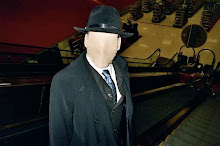In chapter 17 it talks about 3 different types of communication in decision making groups:promotive, disruptive, and counteractive. At work when a certain problem arises, we try to handle it as soon as we can. But if it is a problem that we have to discuss with a higher ranked person, it takes a little more time than that. Using the four functions of effective decision making, we identify the problem and ask ourselves what we can do to fix it and what others can do to fix it. If we can't agree on a solution we try and think of something else. If we decide on something and receive support on it, we then find out if the solution will work. For example, I work in a department store and part of the team of employees who work the night's goals is to make the store nice and neat to the way it was before we opened when we close. Because they were originally assigned one person to a department, the departments in the store were looking trashed and hard to manage. Now, occasionally, they created something called the "wave" which consists of half of the employees on the salesfloor going to one department at a time, at a certain time of the night, and fixing the department as a team. It seems to work on most nights but sometimes it doesn't.
I guess it helps to have a backup plan when the plan intended doesn't go right. Now, in some departments, there are 1-3 people at a time in a certain department and then they alternate and go to other departments to help out. It really helps if the people you work with are actually helpful to the cause and aren't disruptive to the goal at hand, in other words lazy.

3 comments:
I liked your detailed examples about how decision making and teamwork in a department store really helps the entire team to reach their goal of a clean, organized store. It seems at at your work, the staff employs promotive decision making for the most part, which helps everyone.
At your work, you seem to really use the four functions of effective decision making without making a hasty decision and coming up with a quick decision that you regret later. I believe that is very effective and will really help everyone involved because it has all been thought out and there shouldn't be alot of second guessing as you have identified and analyzed the problem to determine the best solution.
And I also agree that it really helps when people work together to achieve the same goal! It seems as though your department store has a lot of good employees and through the teamwork you described, the store will succeed as a whole!
The wave approach to cleaning up a department each night seems like a useful one, as long as everyone as doing their job, as you point out. By having a group tackle the work that needs to be done it seems less overwhelming (as my grandmother used to say, "many hands make light work"). But if there's disruptive communication where group members interfere with the goal, then the work can take longer. Also, if there's a lot of counteractive communication trying to get the group back on track, this suggests group members aren't focused on the task and time is being wasted. Promotive communication suggests that the group is working efficiently.
Team decision making is hard since there are always so many different opinions and solutions, even though they might not be the best solution.
I also think that it is sometimes very necessary to have a group to make decisions. Hirokawa's steps help to keep a group get back on task and achieve their goal.
Post a Comment